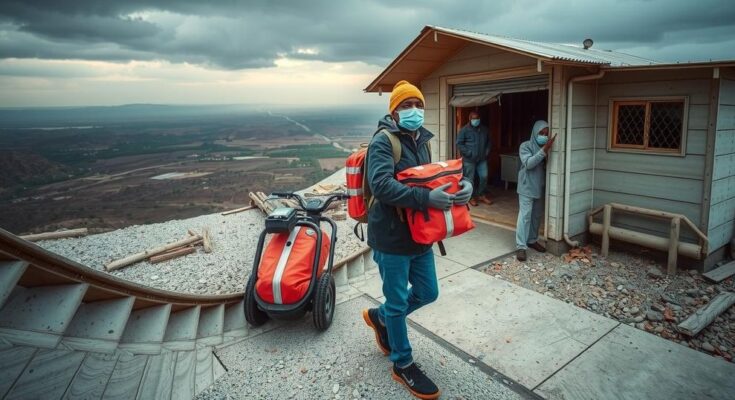Ethiopia is evacuating 80,000 residents due to a series of earthquakes that have raised fears of volcanic eruptions. A 5.8 magnitude quake occurred southeast of Ambosa, prompting significant emergency responses. Over 51,000 people in the Afar and Oromia regions are at risk, and there are concerns regarding the structural integrity of buildings amidst frequent seismic activity.
Ethiopia has initiated an evacuation order for approximately 80,000 residents across the Afar, Oromia, and Amhara regions due to a series of small-scale earthquakes indicative of potential volcanic activity. Reports indicate the occurrence of at least ten earthquakes since last Friday, with the United States Geological Survey tracking a significant 5.8 magnitude quake southeast of Ambosa early Saturday.
The most recent tremors have been felt severely in the Awash Fentale district, where residents experienced alarming aftershocks. Atalay Ayele, a professor of seismic science at Addis Ababa University, confirmed that the epicenter was located within Dofen Mountain in Afar, a region currently exhibiting geological instability. The Ethiopian Disaster Risk Management Commission has flagged over 51,000 residents at risk and has begun relocating those most affected.
Furthermore, observations following Friday’s tremor have raised fears of volcanic eruptions in the region, particularly after smoke was detected near the Dofen volcano. The government is actively monitoring these developments and has deployed emergency workers to assess damage across twelve districts. Remote monitoring and expert involvement are ongoing as officials aim to safeguard citizens against further geological risks.
Ethiopia’s seismic activity has prompted serious concerns regarding infrastructure resilience in areas like Addis Ababa, where many buildings may not comply with recent safety standards. Experts warn that many structures, particularly those built without adherence to updated codes, may not withstand future seismic activity. Engineering teams are currently assessing building integrity and planning necessary reinforcements.
Residents are being advised to stay informed on safety and precautionary measures, as the government remains vigilant in addressing the region’s seismic risks and potential volcanic threats. The situation highlights the urgent need for improvement in construction standards and public awareness of geological hazards.
Ethiopia is currently experiencing a series of earthquakes and possible volcanic activity, prompting notable governmental responses including mass evacuations. The seismic events are a significant concern, particularly in the Afar and Oromia regions where recent tremors have escalated in intensity. Historically, Ethiopia has faced challenges regarding infrastructure safety in light of its geological positioning, which underscores the necessity of adhering to updated building codes and improving overall public safety protocols in response to active seismic risks.
In summary, the Ethiopian government’s evacuation of 80,000 residents highlights the serious risks posed by ongoing seismic activity in the Afar and Oromia regions. With fears of volcanic eruptions and damaged infrastructure, authorities are working urgently to monitor the situation and protect civilians. The ongoing assessment of building codes and infrastructure vulnerability is critical, as is raising public awareness about seismic preparedness in this earthquake-prone area.
Original Source: www.voanews.com




